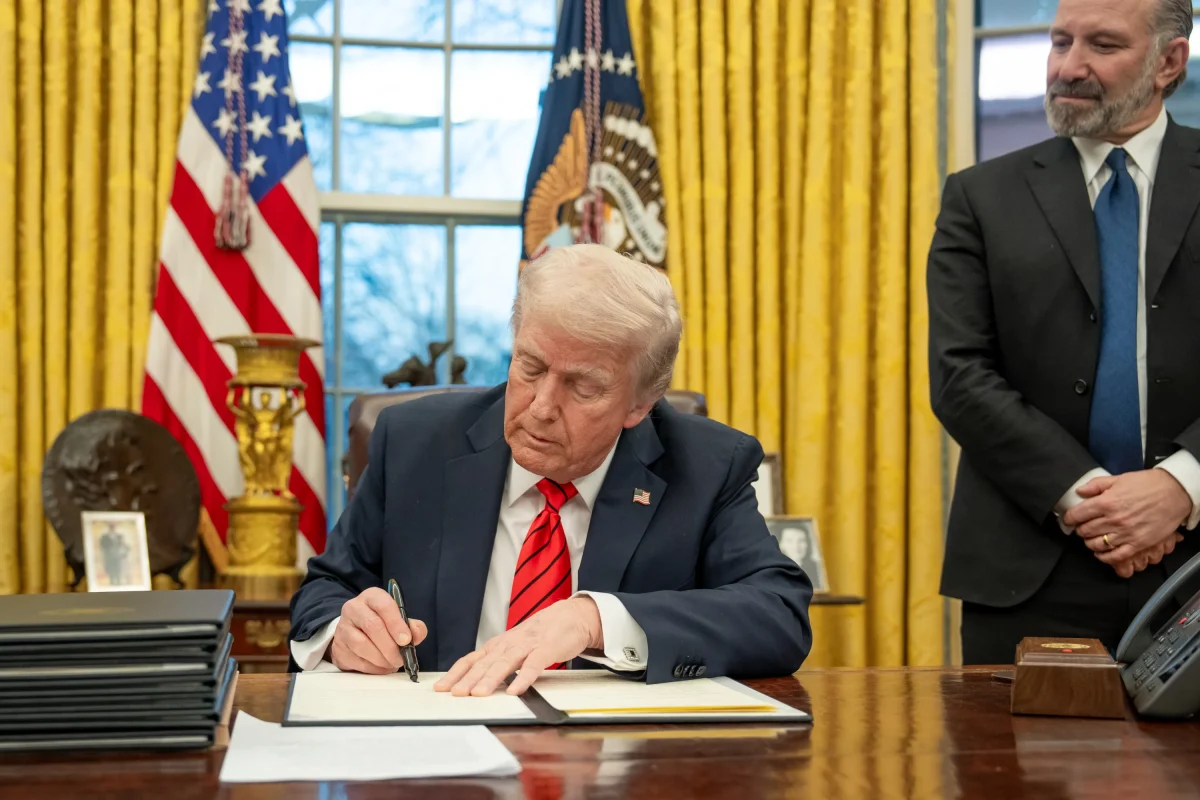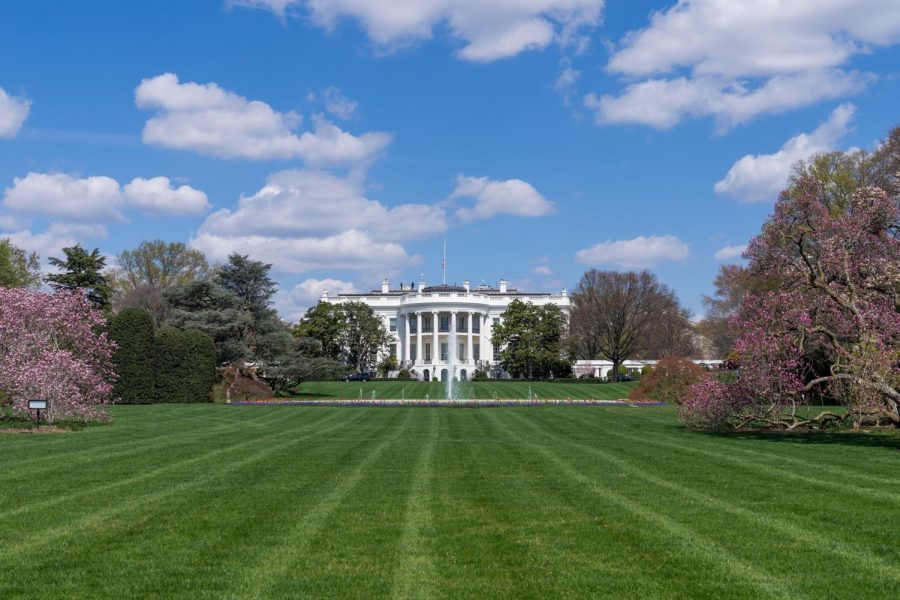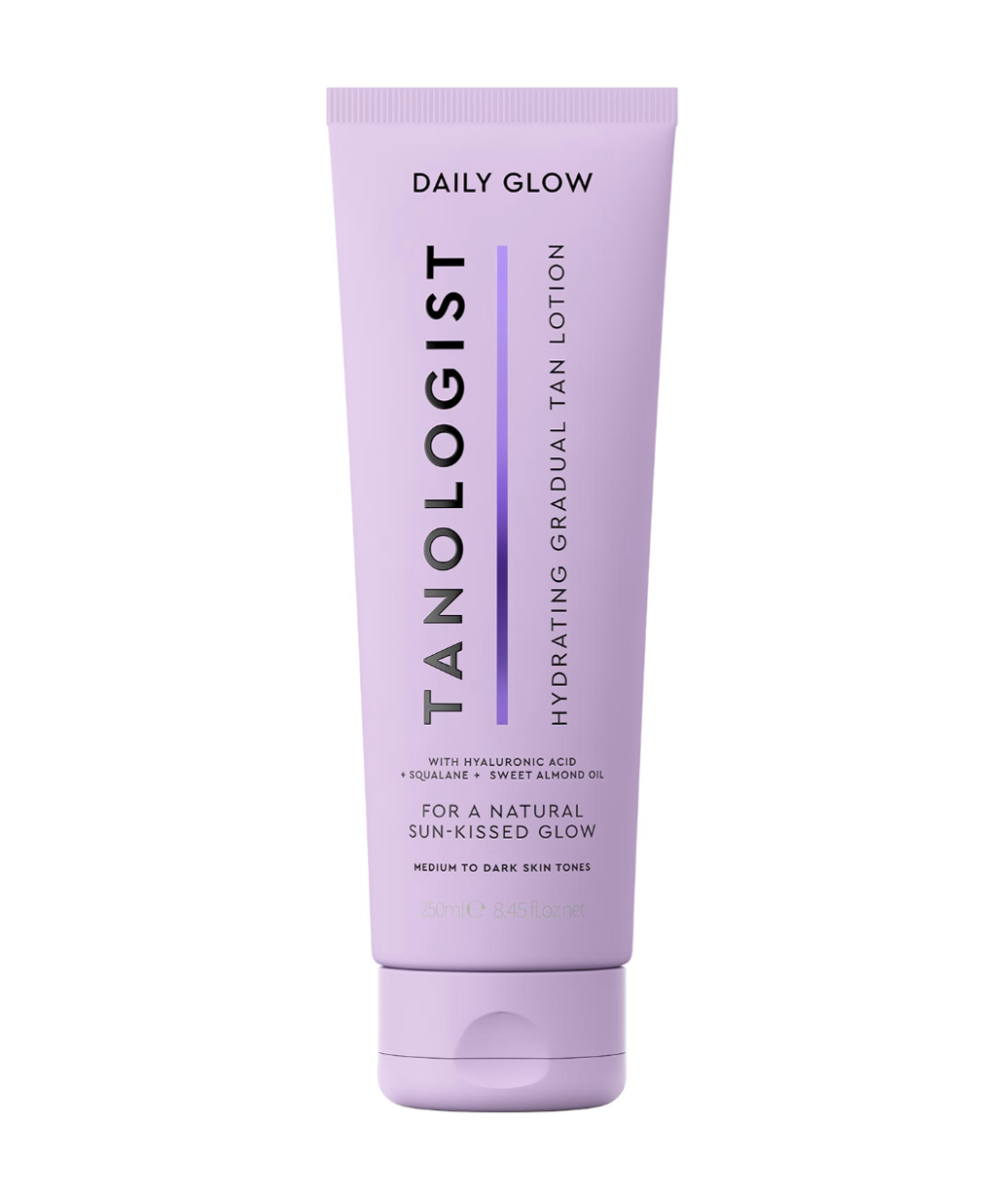China has said enough is enough, announcing 84% tariffs on all U.S. imports, escalating a trade war President Donald Trump initiated with his own tariff policies.
On April 7, Beijing revealed their retaliation methods, including blanket tariffs on all American imports, new export restrictions on rare earths, and business bans on major U.S. companies. The move sent U.S. markets plunging and deepened fears of prolonged economic conflict between the two largest economies in the world.
Tension started brewing since February when Trump began levying 10% tariffs on Chinese products, citing China’s alleged role in the fentanyl crisis. After multiple rounds of back-and-forth economic measures, Trump raised tariffs to 34% in the beginning of April. China’s response mirrors the U.S. tariff hike and expands its strategy: targeting U.S. agriculture, tech, and critical minerals, while also launching a World Trade Organization (WTO) lawsuit and investigations into American companies like DuPont.
Trump, in an X post on April 7, 10:55 a.m., conveyed his thoughts on the impact of these tariffs.
“Oil prices are down, interest rates are down (the slow moving Fed should cut rates!), food prices are down, there is NO INFLATION, and the long time abused USA is bringing in Billions of Dollars a week from the abusing countries on Tariffs that are already in place,” he said.
The reciprocal Chinese tariffs took effect on April 7, right after Trump’s own 34% tariffs on Chinese imports kick in. Unlike previous negotiations between the world’s two largest economies, this time, both sides are unwilling to back down.
Trump, in a Truth Social post on April 9, 1:18 p.m., Trump announced 125% tariffs on goods from China, while pausing all other reciprocal tariffs for 90 days.
[Update: Trump announced 145% tariffs on China on April 10.]
“Based on the lack of respect that China has shown to the World’s Markets, I am hereby raising the Tariff charged to China by the United States of America to 125%, effective immediately,” he said. “At some point, hopefully in the near future, China will realize that the days of ripping off the U.S.A., and other Countries, is no longer sustainable or acceptable.”
“Conversely, and based on the fact that more than 75 countries have called Representatives of the United States, including the Departments of Commerce, Treasury, and the USTR, to negotiate a solution to the subjects being discussed relative to Trade, Trade Barriers, Tariffs, Currency Manipulation, and Non Monetary Tariffs, and that these Countries have not, at my strong suggestion, retaliated in any way, shape, or form against the United States, I have authorized a 90 day PAUSE, and a substantially lowered Reciprocal Tariff during this period, of 10%, also effective immediately. Thank you for your attention to this matter!” he said.
President Trump first imposed new 10% tariffs in February and March, citing China’s alleged role in fueling America’s fentanyl crisis. On March 31, he dramatically upped the ante by announcing a 34% tariff on all Chinese goods, claiming that his move was about protecting American workers and pushing back against unfair trade practices.
On April 4, Huizhong Wu, a reporter for The Associated Press, stated that China responded by not only matching the 34% rate but also using other retaliatory actions.
“Bans on U.S. agricultural imports such as sorghum and poultry. Trade restrictions on 27 American firms, including defense and tech companies. Export controls on rare earth elements, essential for electronics and military tech. A lawsuit filed with the World Trade Organization (WTO), accusing the U.S. of violating global trade rules. An antitrust investigation into DuPont’s operations in China.”
The Chinese Ministry of Commerce in a press conference on April 4, described the U.S. tariffs as “a typical unilateral bullying practice that endangers the stability of the global economic and trade order.”
The Stock market reacted in a dramatic fashion. The S&P 500 dipped by 10% from April 2nd to April 7. Major U.S. companies like Apple and Nike rely on Chinese manufacturing and consumer markets. They saw their stock prices fall due to growing fears of a never-ending trade war.
A junior who wishes to remain anonymous, expressed his dissatisfaction with the tariffs.
“This trade war has become a game of chicken, and because of this escalation, consumers are having to pay the price,” he said. “Basically every big company’s stock price is taking a big hit, and I don’t think this is fair that Trump is able to do that.”
In an interview conducted on April 4 with the New York Times, Gabriel Wildau, a Managing Director at the consulting firm Teneo, stated that Trump is using tariffs as a bargaining chip.
“Trump is betting that tough tariffs will bring China to the negotiating table,” he said. “But this time, China seems ready to play hardball.”
History and Global Studies teacher Pamela Maddock offered her perspective on this trade war between these two countries.
“It’s hard to say what the long-term impact will be—Trump could reverse course if he sees political or economic fallout. But for now, he’s doubling down. In the short term, the tariffs are causing serious volatility,” she said. “From rising costs in building materials to fears among small business owners and working families, the economic uncertainty is affecting nearly every sector. Even Trump-supporting business leaders are beginning to question how far this will go.”
President Trump said on X that he is still open to negotiate, especially for the sale of TikTok, the social media platform that contributed to helping him win the election.
While the U.S. and China have agreed to keep military communication open, hopes for a diplomatic solution between President Trump and Chinese President Xi Jinping are seeming more and more unlikely. Beijing’s recent moves suggest that China no longer intends to negotiate, and instead are prepared for any economic measure necessary.
For now, one thing is clear: the world’s two biggest economies are digging in—and the rest of us may be left to feel the impact.




















